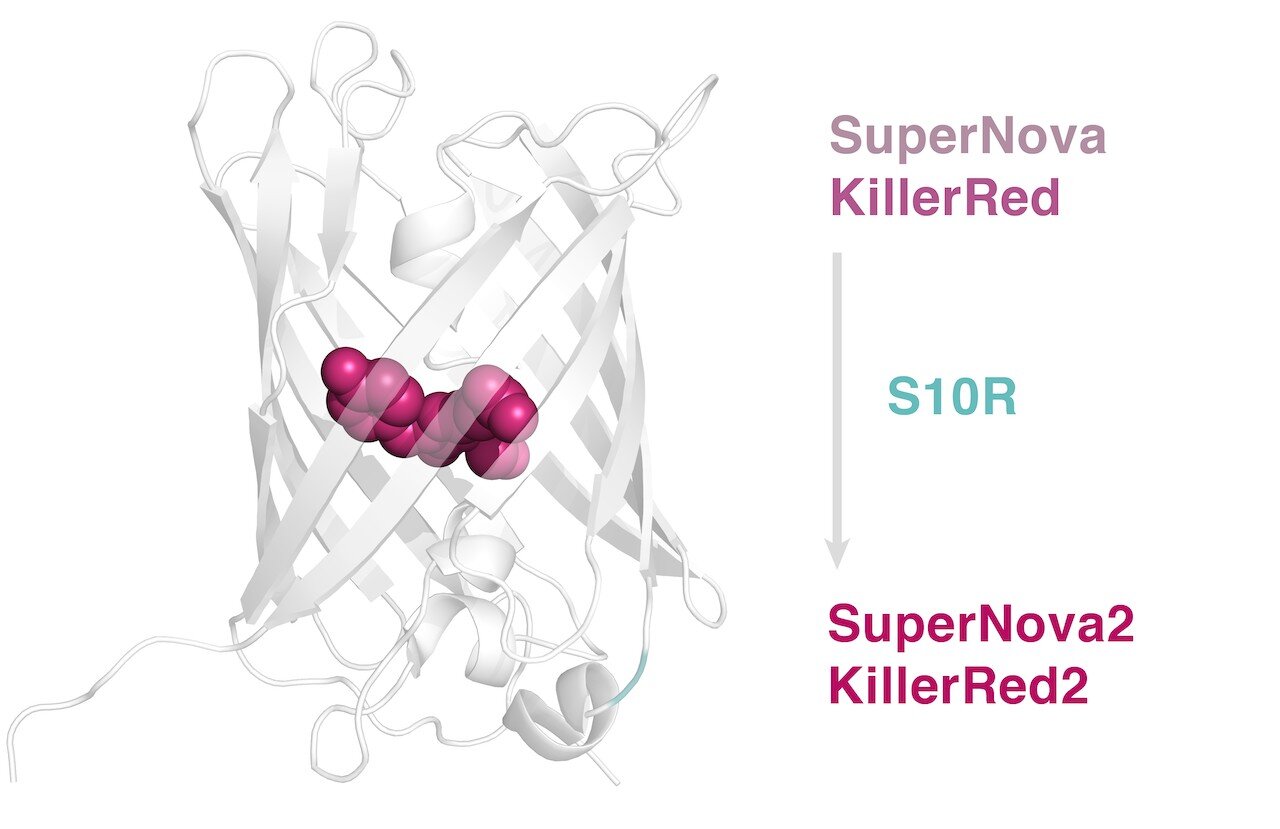#Scientists create a new phototoxic protein, SuperNova2

“#Scientists create a new phototoxic protein, SuperNova2”

Scientists from Skoltech, the Institute of Bioorganic Chemistry of RAS and the London Institute of Medical Sciences (LMS) have developed an enhanced version of SuperNova, a genetically encoded phototoxic synthesizer, that helps control intracellular processes by light exposure. The research was published in the International Journal of Molecular Sciences.
An important research tool, phototoxic proteins are used as genetically encoded photosensitizers to generate reactive oxygen species under light irradiation. In contrast to common chemical photosensitizers, phototoxic proteins are genetically encoded and expressed by the cell itself, which makes them easy to control and direct to any selected compartment in the cell. Thanks to reactive oxygen species formed by the action of light, phototoxic proteins can create strictly localized oxidative stress, for example, to destroy a selected cell population or disable target proteins − a feature particularly sought after in the modeling of cellular processes.
The first phototoxic protein, KillerRed, was described by a team of Russian researchers led by Konstantin Lukyanov, a professor at the Skoltech Center of Life Sciences (CLS), in 2006. KillerRed was further enhanced by Japanese scientists and renamed SuperNova. In their recent study, professor Lukyanov’s team has developed SuperNova2, an improved version of SuperNova, which displays high speed and completeness of maturation and is monomeric, which makes the new protein easily usable and suitable for a broad variety of molecular biology tasks.
“We expect that the genetically encoded photosensitizer SuperNova2 will find use in a wide range of experimental models,” professor Lukyanov comments.
Scientists study color change from green to red in the fluorescent protein
Dmitry A. Gorbachev et al. Genetically Encoded Red Photosensitizers with Enhanced Phototoxicity, International Journal of Molecular Sciences (2020). DOI: 10.3390/ijms21228800
Citation:
Scientists create a new phototoxic protein, SuperNova2 (2020, December 17)
retrieved 17 December 2020
from https://phys.org/news/2020-12-scientists-phototoxic-protein-supernova2.html
This document is subject to copyright. Apart from any fair dealing for the purpose of private study or research, no
part may be reproduced without the written permission. The content is provided for information purposes only.
If you liked the article, do not forget to share it with your friends. Follow us on Google News too, click on the star and choose us from your favorites.
For forums sites go to Forum.BuradaBiliyorum.Com
If you want to read more Like this articles, you can visit our Science category.



